“A tire only loses air if it’s punctured.” This is a common misconception that we have all had or heard and yet the reality is quite different. Indeed, a tire can lose air even without a puncture, as for example in the case of a crack in the valve that is used to inflate your tires. A punctured valve is difficult to detect, and not taking care of it in time can have real consequences for your tire, but also (and above all!) for your safety. Blackcircles Canada, your online tire specialist, offers below a complete guide to the causes and consequences of a punctured valve, and how to repair a leaking valve stem.
A valve is a pin located on the outside of the tire, through which the tire can be inflated/deflated. It has a mechanism consisting of a spring-mounted valve that closes tightly with the air pressure inside the tire. Over time, the stem valve may become brittle and cracked, which may increase the risk of air leaking through it.
When the stem valve leaks, the affected tire is no longer able to retain air. Depending on the extent of the damage, the air will leak out slowly or more quickly. In both cases, the valve must be replaced.
If the air leakage is slow, you will be subject to the problems encountered by drivers driving with underinflated tires. Internal damage that can shorten the service life of the tire by up to a quarter, increased fuel consumption due to higher rolling resistance: the tire will damage faster, and your energy-efficiency will be significantly lower. The tire will also have poorer traction and the stability of your car will be reduced when cornering, not to mention the more pronounced deformation of the tire that increases its internal temperature, which can cause it to burst. Finally, an under-inflated tire increases the risk of hydroplaning. Tire pressure is thus very important!
 Here’s how to do it!Step 1: Make sure it’s your valve stem that’s leaking.
Here’s how to do it!Step 1: Make sure it’s your valve stem that’s leaking.First of all, make sure it is the tire valve stem that is leaking. To do so, there’s a very simple trick! Apply a mixture of water and dishwashing soap to the valve with the cap removed. If bubbles start to appear, your valve is leaking. If this is not the case, and there is a definite air leak, it will be located elsewhere on the tire.
Step 2: Gather the right tools before you start!Before you begin, make sure you have all the necessary equipment to complete the replacement of the faulty valve stem.
For this, you will need the following:
You are now ready to start the process!
Step 3: Loosen the nuts on the wheel you are going to work on.
To do so, use the wrench mentioned in the previous step to loosen each of the lug nuts holding your wheel in place. Do this while the car is still on the ground.
However, for certain models of vehicles, it is possible that the wheel nuts have an anti-theft ring. If this is the case, you’ll have to use the appropriate special key to remove the locking nut(s).
Step 4: Raise your vehicle with the jack and then remove the wheel.First and foremost, make sure the handbrake is applied so that your vehicle is completely immobilized. Then, use your jack to lift your car. Be sure to position it on the right part of the chassis so that the car is properly supported. This will prevent any damage to the car and any bodily injury. Once your car is lifted, secure it on jack stands. Unscrew the wheel bolts completely, then remove the wheel. Finally, place the wheel on the ground flat, with the outside of the wheel facing up.
Step 5: Remove the valve stem core with the removal tool and let the tire deflate.
If you have not already done so, remove the valve cap. Then remove the valve stem core using the valve stem removal tool to release the air from the wheel, which should normally deflate completely on its own.
Step 6: Separate the tire’s bead from the wheel.For this step, use the sledgehammer in the following way: hit the tire sidewall with the sledgehammer in the same spot until you hear a crack or popping sound, and see the inside lip of the tire visibly break loose from the rim. This means that the tire has been successfully detached from the lip of the wheel.
Once the tire bead has been broken, continue hitting with the sledgehammer around the tire to detach the sidewall around the entire circumference of the wheel.
Step 7: Remove the tire from the rim.Once the sidewall of the tire is separated from the outer edge of the rim around the entire circumference of the wheel, insert your tire iron between the edge of the rim and the inside lip of the tire, and then pry upward to pull the lip of the tire over the edge of the wheel. Once you have pulled the lip of the tire over the edge of the wheel, work the tire iron around the rim until the entire lip of the tire is off the rim.
Once you have pulled the lip of the tire over the edge of the wheel, work the tire iron around the rim until the entire lip of the tire is off the rim.
Once the sidewall of the tire is completely above the wheel, grab it by its removed lip and pull it upward so that the opposite lip that was at the bottom of the wheel is now touching the top edge of the rim. Use your tire iron again by inserting it between the tire’s lip and the edge of the wheel and pry upwards to pull the lip over the edge of the rim. As before, work the tire iron around the edge of the wheel until the tire is removed from the wheel.
Step 8: Remove the defective valve stem and replace it with the new one.Once the tire is separated from the rim, it is time to remove the valve stem. To do this, first pull out the valve stem free from the wheel using the needle-nose pliers. Once this has been done, install the replacement valve stem from the inside of the wheel. Once it is in position, use the needle-nose pliers again to pull it through into its right place on the wheel.
Once the stem is in place, it is time to put the tire back on its rim. To do this, start by pressing the tire down over the rim until the bottom bead clears the edge of the rim. The aim here is to return the lower sidewall of the tire to its original position on the wheel.
Then press the upper sidewall of the tire down underneath the edge of the wheel. Then tuck your tire iron between the tire sidewall and the rim edge and use it to make the opposite movement to the one you used to pull the tire sidewall out of the rim. Once the bead clears the lip of the wheel, use the tire iron to work your way round the entire wheel until the tire is completely installed on the wheel. Then inflate it to the correct pressure using the air compressor.
Step 10: Make sure there are no other leaks, and mount your wheel back on!Once the tire is inflated to the correct pressure, check for other leaks.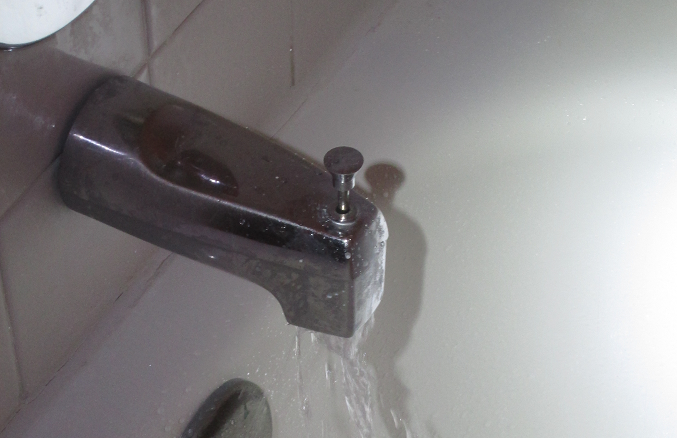 If all is well, mount the wheel on your vehicle and bring it down by lowering the level of the jack stands until the repaired wheel touches the ground and you can safely remove them.
If all is well, mount the wheel on your vehicle and bring it down by lowering the level of the jack stands until the repaired wheel touches the ground and you can safely remove them.
Ultimately, it is very important to make sure your tires are free of air leaks to maintain proper air pressure at all times. In the case of a slow air leak, the consequences can be dramatic. If the air leak is due to a faulty tire valve, you will definitely need to replace it. You can either follow the above procedure on how to repair a leaking tire valve or take it directly to a specialist. If, on the other hand, you need to change the entire tire, consult our selection of tires adapted for your car directly online on our website!
Tire Installation 101: When and how to change your tires?
I just filled up my tires and, two days later, my right tire is losing pressure.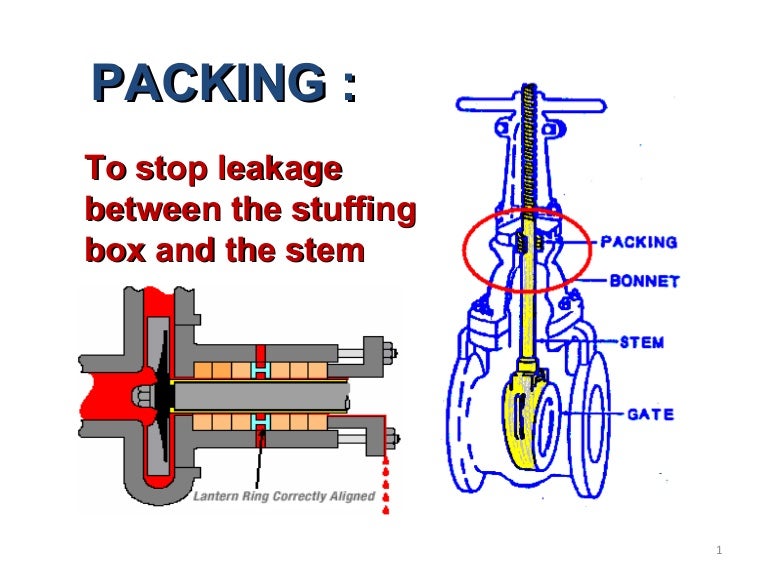 I’ve checked the tire for leaks and don’t think the tire itself needs replacing, so my next guess is the tire valve stem is leaking. How do I fix a tire valve stem leak?
I’ve checked the tire for leaks and don’t think the tire itself needs replacing, so my next guess is the tire valve stem is leaking. How do I fix a tire valve stem leak?
Rachel Juillerat · Answered on Feb 18, 2022
Reviewed by Shannon Martin, Licensed Insurance Agent.
Fortunately for you, fixing a tire valve stem leak is both easy and cheap. You just need to purchase a replacement tire valve stem and a valve core tool. A pack containing both of these items is on Amazon for less than $5!
To replace the leaking tire valve stem, do the following:

Note: If you notice corrosion on the old stem, be sure to clean the interior threads of the tire stem on the tire.
While this is an easy and cheap fix, there are some car fixes you may need assistance with, so it’s always a good idea to invest in a solid car insurance policy.
Jerry makes finding the right policy for you easy. Jerry compares personalized rates from more than 50 top providers and delivers the best deals to your phone in minutes for free. The average Jerry driver saves $887 a year on car insurance.
MORE: Will insurance cover a flat tire?
Car RepairCar Tires
View full answer
WHY YOU CAN TRUST JERRY
Jerry partners with more than 50 insurance companies, but our content is independently researched, written, and fact-checked by our team of editors and agents.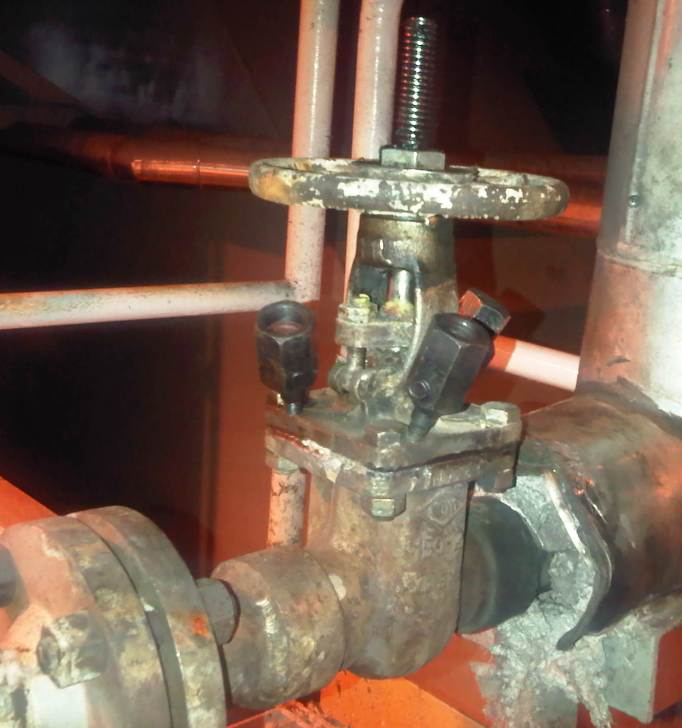 We aren’t paid for reviews or other content.
We aren’t paid for reviews or other content.
Browse More Content
What To Do If Your Parking Brake Won’t Engage
Oxygen Sensor Replacement Cost
Reverse Lightbulb Replacement
What To Do If Your Steering Wheel Is Creaking
What To Do If You Hear A Squealing Noise When Steering Wheel Is Turned
Chevrolet Impala Super Sport Insurance Cost
Infiniti Qx60 Insurance Cost
Bmw M6 Insurance Cost
Ford F350 Super Duty Insurance Cost
Buick Cascada Premium Insurance Cost
Branchland Car Insurance
Box Elder Car Insurance
Lumber Bridge Car Insurance
Fairview Car Insurance
Rochester Car Insurance
I’ve loved Lamborghinis since I was a kid.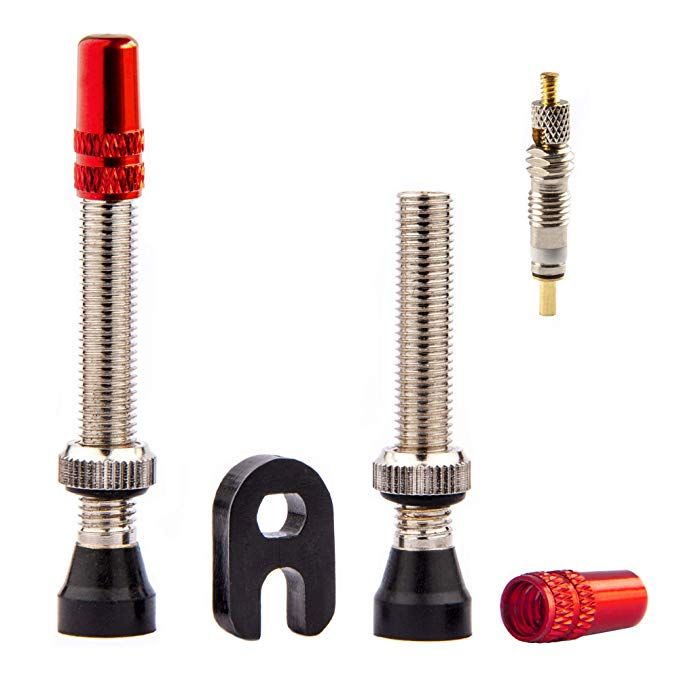 They’re sleek, they’re fast—they’re my dream car! I’m already saving up to buy one someday. How much does car insurance for a Lamborghini cost?
They’re sleek, they’re fast—they’re my dream car! I’m already saving up to buy one someday. How much does car insurance for a Lamborghini cost?
Melanie Johnson
Feb 18, 2022
I got a ticket yesterday and I’m so bummed. I’ve never gotten a ticket before—I was just zoned out and didn't realize I was going 10 over. Can I ask the judge to reduce my ticket?
Melanie Johnson
Feb 18, 2022
I’ve been sitting on my old car that no longer works and I’m ready to move on and clean out. Where can I sell it?
Pat Roache
Feb 18, 2022
Browse All Questions
Some cars are cheaper in Mexico, but it depends on the vehicle and consumer demand.
Matt Nightingale
Apr 19, 2022
If you have a vehicle from 1995 or newer, you’ll need to make sure you have an EPA-approved catalytic converter.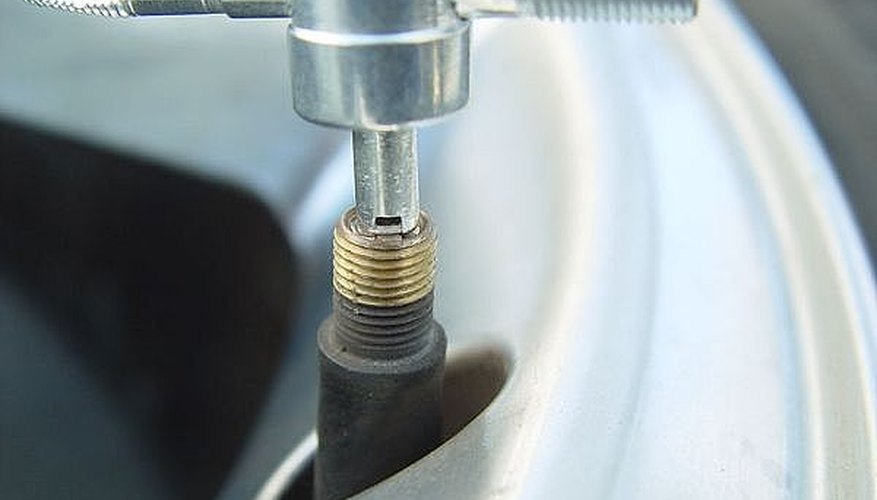 Follow our tips to keep it safe from theft!
Follow our tips to keep it safe from theft!
Matt Nightingale
Jun 22, 2022
Speeding
driving record
Car Body Repair
Car Reviews
FS-1 Form
Collision Coverage
Car Loans
No Fault State
Emergency Insurance
State Farm
Young Drivers
Cheap Auto Insurance
Full Coverage Insurance
Car Prices
driving record
Travelers
Natural Disasters
Save Money
Title Transfers
Donating a Car
Fleet Sales
Identity Theft
Chrysler
Mitsubishi
No long forms
No spam or unwanted phone calls
Quotes from top insurance companies
Find insurance savings — it's 100% free
Toyota
Hyundai
Mercedes-Benz
Subaru
Chevrolet
Mitsubishi
At the inlets of hot and cold water pipes, so that, if necessary, it is possible to shut off the water for repairs, replacement of taps, pipes or mixers; as well as on taps from the main water supply lines, for example, in garden plots, valves are installed to connect a watering hose.
Taps are installed at the ends of pipes at the points of water withdrawal. Both valves and taps consist of a body and a valve head. Their main difference from each other is that the valve on the body has two identical threaded holes for installing it between the pipes, and on the faucet body there is one hole for attaching to the end of the water pipe.
Install the valves in such a way that the arrow on their bodies coincides with the direction of water flow. There are two types of valve heads: rotary and reciprocating valves. Heads of the second type are more reliable, since their rubber gasket lasts longer due to the fact that the valve only moves forward, without erasing the gasket, but pressing it against the seat.
If a faucet or faucet leaks (leaks) when closed, it is usually caused by one of the following problems, regardless of head design: a worn (worn or cracked) valve gasket; the thread at the stem has worn out and it does not press the gasket to the seat; seals and seals between the valve body and the head body are worn out. If the rubber gasket fails, the valve or valve with a fully screwed stem continues to pass water. To change the gasket, it is necessary to turn off the water in the pipe where the faulty faucet (or valve) is located. After making sure that water does not flow through the pipe or only slightly oozes when the faucet (valve) is fully open, you need to unscrew the valve head using a regular or adjustable wrench and replace the rubber gasket or install a new valve. If you do not have a ready-made gasket, you can easily make your own. To do this, from thick sheet rubber or leatherette with a thickness of at least 3.5 mm, you need to cut or cut out a circle with a diameter slightly larger than the valve seat using a tube with sharp edges so that the gasket fits snugly into the seat.
If the rubber gasket fails, the valve or valve with a fully screwed stem continues to pass water. To change the gasket, it is necessary to turn off the water in the pipe where the faulty faucet (or valve) is located. After making sure that water does not flow through the pipe or only slightly oozes when the faucet (valve) is fully open, you need to unscrew the valve head using a regular or adjustable wrench and replace the rubber gasket or install a new valve. If you do not have a ready-made gasket, you can easily make your own. To do this, from thick sheet rubber or leatherette with a thickness of at least 3.5 mm, you need to cut or cut out a circle with a diameter slightly larger than the valve seat using a tube with sharp edges so that the gasket fits snugly into the seat.
To prevent the faucet from humming, the protruding edge of the gasket must be cut with scissors at an angle of approximately 45°. Microporous rubber and plastic are not suitable for making gaskets. Sometimes pads are made (but only to block cold water) from leather in several layers, pulling them together on a cone so that the cone enters the hole in the saddle. Usually this is done if the edge of the seat is broken and the flat gasket does not fit snugly against it. You can also use rubber soles from old shoes to make pads.
Usually this is done if the edge of the seat is broken and the flat gasket does not fit snugly against it. You can also use rubber soles from old shoes to make pads.
Unfortunately, the gasket made of ordinary rubber on the hot water faucet does not last long - under the influence of high temperature it quickly breaks down and becomes brittle. In order for the gasket to last longer, it must be cut from the cord of a car tire. If water oozes out from under the stem, which is especially unacceptable for the valve, it means that the stuffing box is worn out and should be sealed or replaced. To seal the stuffing box, tighten the stuffing box bushing tighter. This can be done with an ordinary wrench or adjustable wrench, but not with pliers, which can damage the edges of the sleeve, after which it will have to be changed. If the sleeve is tightened to the limit, and the water, despite this, continues to ooze, you should either add a stuffing box around the stem, or replace it completely. To do this, you need to completely screw in the stem of the faucet (valve) being repaired and make sure that the water in the pipe is blocked by it. If this is not done, water entering the pipe under pressure can squeeze out the old stuffing box and flood the room. If the tap closes securely, then you can not close the valve at the entrance to the apartment. So, after the valve is closed, it is necessary to unscrew and remove the sleeve or union nut, then remove the old gland packing with an awl or the sting of a narrow screwdriver and put a new one in its place. To stuff the stuffing box, it is best to use linen twine, and in its absence - burlap threads, asbestos cord, a piece of rubber tube of a suitable diameter. The twine must be laid clockwise, that is, in the same direction in which the stuffing box is twisted, tamping each new layer with a screwdriver. To increase water resistance, the laid twine should be slightly moistened with natural drying oil. When stuffing the stuffing box, it is important not to overfill the stuffing box groove - the sleeve must be twisted by at least 2-3 threads so as not to rip it off.
To do this, you need to completely screw in the stem of the faucet (valve) being repaired and make sure that the water in the pipe is blocked by it. If this is not done, water entering the pipe under pressure can squeeze out the old stuffing box and flood the room. If the tap closes securely, then you can not close the valve at the entrance to the apartment. So, after the valve is closed, it is necessary to unscrew and remove the sleeve or union nut, then remove the old gland packing with an awl or the sting of a narrow screwdriver and put a new one in its place. To stuff the stuffing box, it is best to use linen twine, and in its absence - burlap threads, asbestos cord, a piece of rubber tube of a suitable diameter. The twine must be laid clockwise, that is, in the same direction in which the stuffing box is twisted, tamping each new layer with a screwdriver. To increase water resistance, the laid twine should be slightly moistened with natural drying oil. When stuffing the stuffing box, it is important not to overfill the stuffing box groove - the sleeve must be twisted by at least 2-3 threads so as not to rip it off.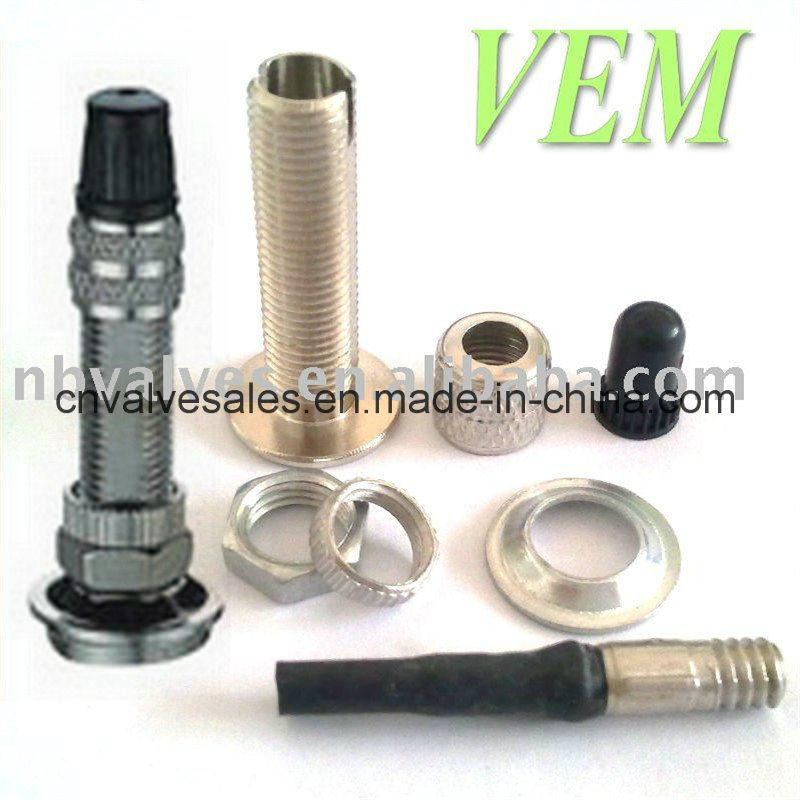
For valves with a union nut, there is an easier way to seal the gland: after closing the valve and unscrewing the union nut, without removing it from the stem, wind a loose rope over the gland bushing and then screw on the union nut. True, the seal made in this way is less durable than winding the rope under the gland bushing. The tap or valve will not shut off the water even when the valve seat is destroyed and the rubber gasket does not hold in it. In this case, the gasket in the valve must be fixed with a screw (if there is a threaded hole in the valve shank) or the valve must be replaced by taking it from the old valve head.
In order for the gasket to wear evenly over the entire surface of the valve, the valve is made “floating” - its shank rotates freely in the stem hole, but does not fall out of it when the valve head is removed. If the valve does not rest on the stems, then when installing the head in place, it is necessary to wrap a little flax fiber on the valve shank (ordinary threads can also be used) so that it fits tightly into the stem hole and does not fall out when the head is installed. Subsequently, the winding will tear and come out with water.
Subsequently, the winding will tear and come out with water.
If the thread on the stem is erased, the tap (valve) does not shut off the water, and further rotation of the stem is useless, because, having reached a certain position, the stem breaks. In this case, to repair the tap or valve, you need to remove the valve head, and either replace it with a new one, or replace only one stem in it. If neither a new head nor a stem with a normal thread is at hand, a temporary repair can be made: install a gasket 6-8 mm thick in the valve in order to use a still suitable section of the stem thread. In the absence of rubber of this thickness, it is recommended to place metal washers under the usual gasket in the valve.
Sometimes a leak is caused by a sink or a hole in the seat, the annular protrusion in the faucet body against which the valve gasket rests. The appearance of gullies or a sharp edge is due to the fact that water is supplied to the water pipes under pressure, and where the gasket does not fit snugly against the edge of the saddle, an intense leak forms, which eventually flushes the saddle in one place or evenly around the entire circumference. Therefore, in order to close a faucet or valve with a defective seat, it is necessary to press the gasket against the seat more strongly than usual, because of this it fails much faster, as it is either cut through by a sharp edge formed on the seat, or crumbled on the edges of the shell. Shallow pits and a sharp seat edge can be removed with a standard screwdriver. To do this, the end of the tip of the screwdriver is placed on the plane of the saddle and in a circular motion, with which the screw is usually tightened, with a slight pressure, the edge is scraped off to the depth of the sink. It is even better to process the saddle with a face mill - manually or with an electric drill.
Therefore, in order to close a faucet or valve with a defective seat, it is necessary to press the gasket against the seat more strongly than usual, because of this it fails much faster, as it is either cut through by a sharp edge formed on the seat, or crumbled on the edges of the shell. Shallow pits and a sharp seat edge can be removed with a standard screwdriver. To do this, the end of the tip of the screwdriver is placed on the plane of the saddle and in a circular motion, with which the screw is usually tightened, with a slight pressure, the edge is scraped off to the depth of the sink. It is even better to process the saddle with a face mill - manually or with an electric drill.
Faucets come with vertical (tabletop) and horizontal (wall) taps. All mixers (except for the central herringbone type mixer) have a body, two sides with taps that are connected to pipes with hot and cold water, and a spout. Faucets designed for installation in bathrooms also have a shower and a shower-spout switch.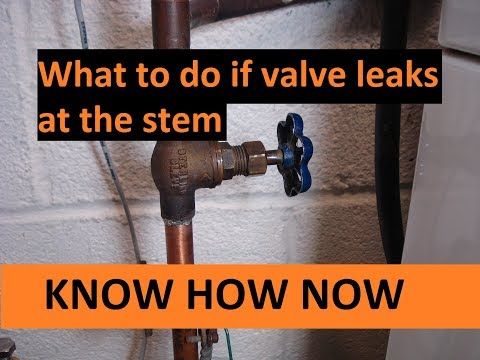 The herringbone mixer does not have sidewalls - the tap heads are installed directly into the mixer body, and pipes supplying hot and cold water are also attached to it.
The herringbone mixer does not have sidewalls - the tap heads are installed directly into the mixer body, and pipes supplying hot and cold water are also attached to it.
Regardless of the design of the mixer, the valve heads are used in them the same as in conventional taps, therefore, the defects that occur in them and the methods for their elimination are the same as for taps or valves. All mixers, except for "herringbones", are connected to the supply pipes by means of union nuts and adapter bushings, which plumbers call "boots". These bushings are made slightly curved so that the distance between the axes of their inlet and outlet holes is 4-6 mm.
The presence of adapter sleeves of this configuration is necessary because the distance between the axes of the pipes supplying cold and hot water often does not coincide with the distance between the axes of the sides of the mixer. When replacing a mixer, there is no need to immediately change the adapter sleeves, especially if they are correctly installed, they do not have defects and leaks at the point of their connection to the supply pipes. It is quite possible to install a new mixer on the old adapter bushings. If, nevertheless, one of the bushings had to be replaced for some reason, you need to carefully ensure that the new adapter bush is not longer or shorter than the old one, otherwise the installation of the mixer will be very complicated due to the inevitable distortion of the threaded connection. The adapter sleeve is connected to the water supply pipe by means of a coupling in the same way as a tap or valve. To screw the adapter sleeve into the coupling, so as not to scratch its chrome coating, it is best not with a pipe wrench, but with a pliers handle inserted into the hole designed for the passage of water.
It is quite possible to install a new mixer on the old adapter bushings. If, nevertheless, one of the bushings had to be replaced for some reason, you need to carefully ensure that the new adapter bush is not longer or shorter than the old one, otherwise the installation of the mixer will be very complicated due to the inevitable distortion of the threaded connection. The adapter sleeve is connected to the water supply pipe by means of a coupling in the same way as a tap or valve. To screw the adapter sleeve into the coupling, so as not to scratch its chrome coating, it is best not with a pipe wrench, but with a pliers handle inserted into the hole designed for the passage of water.
When changing the faucet, pay special attention to the rubber o-rings between the adapter sleeves and the sides. If they have dried up and cracked, they must be replaced with new ones, best of all from sheet rubber of medium hardness 3-5 mm thick. A thicker gasket better conceals inaccuracies in the fit of the ends of the bushings and sidewalls to each other. The maximum thickness of the spacer may be such that at least two threads of thread are left free at the union nut for the initial engagement of the sidewall threads. It is very important not to allow leaks in mixers under a loosely pressed valve gasket in order to exclude the possibility of formation of washouts in the seat. A small gully can be removed with a screwdriver, as already described, but if there are significant defects in the seat, the entire mixer will have to be replaced, and this is much more expensive than replacing a faucet or valve.
The maximum thickness of the spacer may be such that at least two threads of thread are left free at the union nut for the initial engagement of the sidewall threads. It is very important not to allow leaks in mixers under a loosely pressed valve gasket in order to exclude the possibility of formation of washouts in the seat. A small gully can be removed with a screwdriver, as already described, but if there are significant defects in the seat, the entire mixer will have to be replaced, and this is much more expensive than replacing a faucet or valve.
Many people now use thin plastic hoses in a metal braid and with union nuts at the ends to connect the sink instead of bulky sets of pipes, couplings and angles. Indeed, they are much more convenient when installing a sink than steel pipes. But then you decided to change the faucet at the sink, bought the one you liked, brought it home, but ... It is impossible to connect it using the foreign hoses you have installed, since the two pipes for connecting water to the faucet are completely smooth, they are designed to connect the sink faucet when using pipes, not hoses. There is a way out. It is necessary to flare the ends of the tubes coming out of the mixer, and it can also be installed on the hose. Before you start flaring the ends of the mixer tubes, you must not forget to first put on each of them a union nut, with which the hose will be connected to the mixer, since it will be impossible to put it on after flaring. When flaring, one of the workers must hold the tube with pliers, the end of which is flared, and the mixer itself; the second worker, placing a steel ball with a diameter of about 10 mm on the end of the flared tube, with light hammer blows on the ball, expands the end of the outlet of the tube until it takes the shape of a mushroom cap. At the very end of the flaring, having removed the ball, several blows should be made on the end of the tube to make it flat. After carrying out similar manipulations with both tubes of the mixer, it can also be installed on hoses.
There is a way out. It is necessary to flare the ends of the tubes coming out of the mixer, and it can also be installed on the hose. Before you start flaring the ends of the mixer tubes, you must not forget to first put on each of them a union nut, with which the hose will be connected to the mixer, since it will be impossible to put it on after flaring. When flaring, one of the workers must hold the tube with pliers, the end of which is flared, and the mixer itself; the second worker, placing a steel ball with a diameter of about 10 mm on the end of the flared tube, with light hammer blows on the ball, expands the end of the outlet of the tube until it takes the shape of a mushroom cap. At the very end of the flaring, having removed the ball, several blows should be made on the end of the tube to make it flat. After carrying out similar manipulations with both tubes of the mixer, it can also be installed on hoses.
By the way, since we are talking about imported hoses. If you are rearranging a bathtub or are going to connect water to an automatic washing machine, instead of building a garden of steel pipes, precisely bending them, connecting them, etc.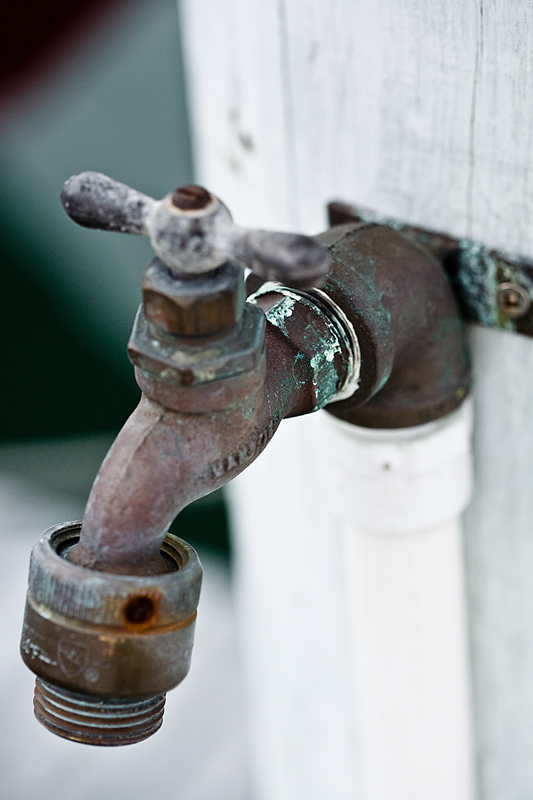 , it is best to use these hoses: it is convenient, fast and you can always check the condition of this new one " pipeline". The main thing to remember when connecting these hoses is that the union nuts must not be tightened tightly, they must be tightened with almost normal hand force.
, it is best to use these hoses: it is convenient, fast and you can always check the condition of this new one " pipeline". The main thing to remember when connecting these hoses is that the union nuts must not be tightened tightly, they must be tightened with almost normal hand force.
To purify cold water, a mechanical water filter is installed on the faucet in the kitchen, which allows you to get water of increased purity and transparency for the needs of your apartment. The filter contains a filter element made of high density polypropylene with holes of 5 microns, trapping up to 98% of rust, sand and sediment particles in the water. But you can install this filter only on a mixer, on the spout of which - at the very end - there is a thread intended for attaching the filter. So, if you want to install a similar filter on your faucet, and the spout on the faucet is smooth, without threads, the faucet will have to be changed. There are much larger filters on sale that are installed by breaking a water pipe, but they are too big for an apartment.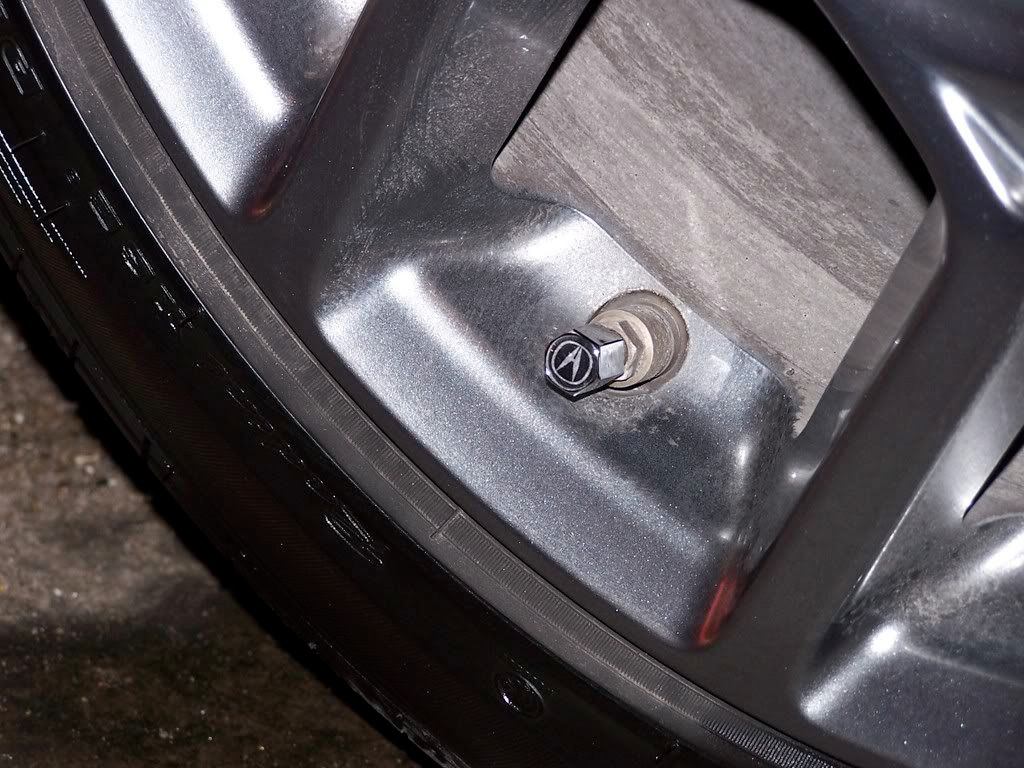
The shower-spout switch is located in the faucet body and is connected to the sides, shower and spout. The most common faucets in which water flows from the sidewalls are mixed and sent to the shower or spout with the help of a body plug. The cork is a hollow metal body, inserted into a conical hole in the center of the mixer body, and their surfaces are mutually mated so that there is practically no slightest gap between them. The cone plug has holes through which hot and cold water flows from the sides to the spout or shower, depending on the position of the plug.
The most common faucet defect is the simultaneous supply of water to both the shower and the spout, regardless of the position of the switch handle. The reason for this is the gap between the surfaces of the cork and the conical hole, through which water penetrates. If the water does not flow much, it just oozes, then the leak can be eliminated in the following way: you need to disassemble the switching device and cover the outer surface of the cone plug with a thin layer of wax, some kind of thick lubricant or soap. If the water flows strongly, neither lubricating the cone plug nor replacing it with one taken from another mixer will help, since the cork is rubbed individually in each mixer. To eliminate the leak, you need to re-grind the plug. In order to grind the cork, a thin layer of GOI paste should be applied to its surface, put in place and rotated several times with the switch handle. Periodically, the cone must be removed and wiped with a clean cloth, checking the quality of grinding.
If the water flows strongly, neither lubricating the cone plug nor replacing it with one taken from another mixer will help, since the cork is rubbed individually in each mixer. To eliminate the leak, you need to re-grind the plug. In order to grind the cork, a thin layer of GOI paste should be applied to its surface, put in place and rotated several times with the switch handle. Periodically, the cone must be removed and wiped with a clean cloth, checking the quality of grinding.
The most effective way to determine the quality of a lap is as follows. Draw a line along the generatrix of the cone with chalk, set the cone in place and turn it several times. If after that the line on the cone is evenly rubbed, then the lapping is done well, if the line is not rubbed, the lapping must be repeated. Polishing paste GOI (by the name of the creator - the State Optical Institute) is of three types, and each type has its own color: black - for rough processing, dark green - for fine grinding and light green - for fine polishing.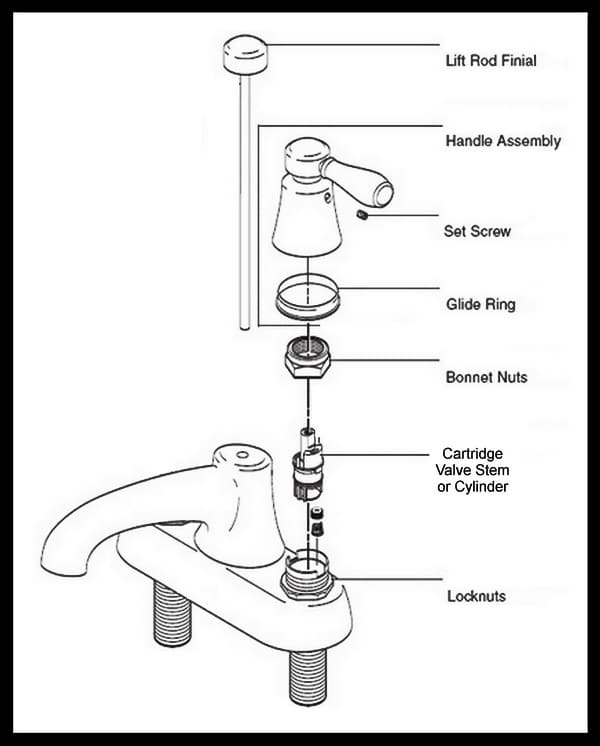
The most common shower problems are leaking at the connection of the shower tube or flexible hose to the faucet, rupture of the rubber tube of the flexible hose and blockage of the shower screen. If a leak occurs at the point where the shower tube (flexible hose) is connected to the faucet, you must either replace the rubber gasket under the union nut of the flexible hose, or tighten the connecting nut on the shower tube more tightly, or wrap hemp on the thread of the shower tube to better seal the connection. To change the rubber tube in a flexible hose, you need to disconnect it from the faucet and remove the handle with a shower net, then remove the plastic sleeve from one end of the rubber tube and pull the tube out of the metal braid. Then insert a new tube into the braid, fasten plastic bushings at its ends and install the hose in place.
When using the shower for a long time, the openings of the shower screen become clogged, you can clean them with an awl or an ordinary thick needle, and then it is recommended to rinse the screen with a jet of water directed to its front side. When repairing faucets, faucets, showers over a faience sink or enameled bathtub, it is recommended to put a sheet of plywood, a piece of chipboard or fiberboard on them so that an accidentally dropped tool does not break the sink and damage the enamel.
When repairing faucets, faucets, showers over a faience sink or enameled bathtub, it is recommended to put a sheet of plywood, a piece of chipboard or fiberboard on them so that an accidentally dropped tool does not break the sink and damage the enamel.
Source: mukhin.ru/
Go to the catalog and see the prices.
March 22, 2020 Do-it-yourself educational program
This instruction will help you fix broken valves or buttons, water leakage and other malfunctions.
Share
0 The toilet consists of a toilet bowl, a cistern and a seat with a lid. The bowl serves as a base and is fixed to the floor with screws. It contains a siphon, which is connected through a cuff or a flexible corrugation to the sewer. The main function of the siphon is a quick flush due to the gravity of the flow and the pressure difference. This part is constantly filled with water and works as a water seal, preventing unpleasant odors from spreading.
This part is constantly filled with water and works as a water seal, preventing unpleasant odors from spreading.
The flush cistern is either mounted on the bowl shelf in compact toilets or mounted to the wall in old style sanitary ware. From the side or from the bottom, the container is connected to the water supply with a flexible connection, which is connected to the filler fittings. The latter, in turn, is equipped with a float valve that controls the filling of the tank with water to the desired level.
In the same place, inside, there is a drain valve responsible for draining water. It is to it that a button is attached through a special mechanism, with which we control the flush. To protect against overflow, the drain valve has an overflow pipe. Through it, in the event of a malfunction of the float valve, water flows into the toilet, and not onto the floor.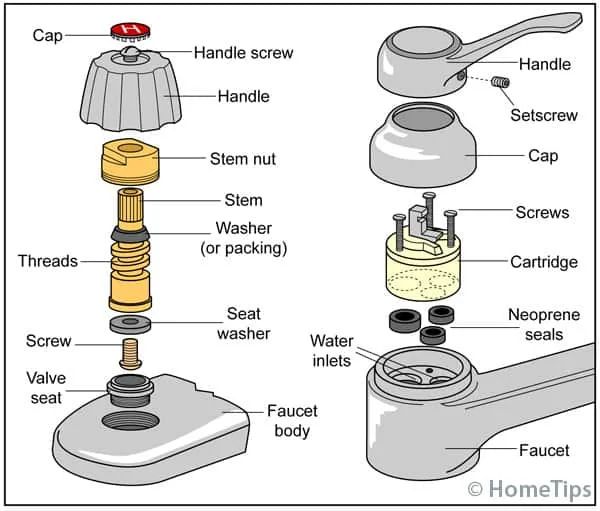
Reading now 🔥
Most of the malfunctions are related to the drain and fill mechanisms. To eliminate such breakdowns, you need to disassemble the tank. So let's first look at how it's done.
In older toilets with a plastic cistern, the lid is held on by clips and removed by pulling upwards. Sometimes you additionally have to pry its edges with a screwdriver or other sharp object.
In today's compact toilets, the lid simply rests on the cistern and is fixed only by a button. Therefore, to remove the part, you must first unscrew the bezel of the button counterclockwise and remove it.
In some toilets, the button mechanism is secured with a screw hidden inside. In this case, pry off the top of the button with a sharp knife or thin screwdriver, and then unscrew the screw and remove the button.
There are also drains equipped with a stem with a handle that lifts up. To remove it, you need to lift the ball and unscrew it counterclockwise, holding it by the stem.
First, turn off the water at the inlet to the toilet bowl, and then grasp the flush mechanism with your hand and, turning it slightly counterclockwise until it clicks, lift it up. Sometimes there is a latch on the armature that needs to be pushed back before removing the mechanism.
To replace the drain valve with fittings of a different design or manufacturer, the mechanism, including the seat, must be completely removed. To do this, remove the tank and unscrew the large nut from the bottom.
The filling valve with side connection is very easy to remove. It is enough to remove the cover and disconnect the flexible hose, and then unscrew the fixing nut from the outside and pull out the mechanism.
Bottom fitting is more difficult. First, remove the flexible hose and tank cap.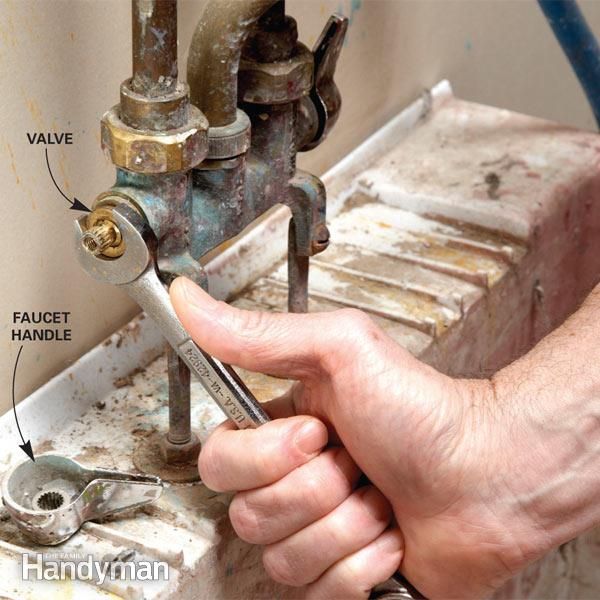 Then wash off the water and remove the drain valve. Next, unscrew the nut with which the filling valve is attached from below, and take it out. If the water has not drained completely, it is better to substitute a basin or other container so as not to spill everything on the floor.
Then wash off the water and remove the drain valve. Next, unscrew the nut with which the filling valve is attached from below, and take it out. If the water has not drained completely, it is better to substitute a basin or other container so as not to spill everything on the floor.
In older toilets, it is plastic and can be removed quite simply. First, they shut off the water supply and wash off the residue, and then lift the lid and unscrew the screws that secure the tank to the wall. After that, unscrew the flexible hose and the nut of the drain socket at the bottom of the tank.
On compact toilets, the tank is attached to the bowl shelf, so it is taken apart differently. The first step is to turn off the water and press the flush. Then remove the cover, remove the drain and fill fittings and remove the remaining water with a sponge or cloth.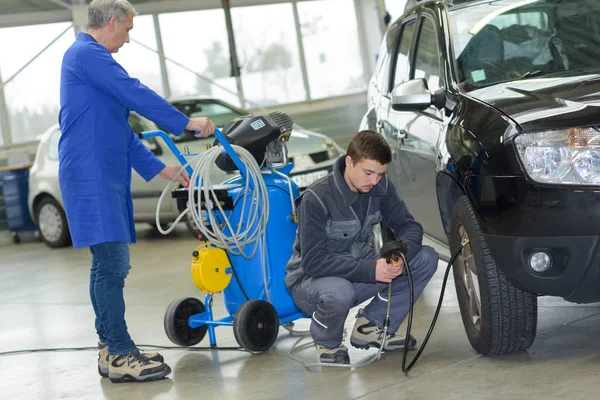 Next, a flexible eyeliner is unscrewed, as well as the fixing screws of the tank from the bottom of the toilet bowl.
Next, a flexible eyeliner is unscrewed, as well as the fixing screws of the tank from the bottom of the toilet bowl.
If a puddle forms in the area of the connection to the sewer socket or at the outlet of the toilet bowl itself, the cause lies in the drying of the cuff or a break in the flange of the flexible corrugated pipe. With a rigid connection on plastic pipes, there are practically no such problems.
This is corrected by replacing the corrugation with a new one, while it is important to carefully install it without kinks and kinks. As a temporary solution, you can treat the joint around the pipe with silicone sealant, after wiping and drying this place.
There may be several reasons for such a problem, but they all boil down to the fact that there is some kind of barrier that prevents water from entering the tank. It is better to start the search with the simplest options and gradually move towards the more complex ones.
The first step is to turn off the water and remove the flexible hose from the side or bottom of the toilet. If there is a blockage, clean it and check the pressure by opening the water and lowering the hose into a basin or other container. If the jet is good, the next step is to check the filter inside the supply valve.
It has the appearance of a plastic mesh insert. You need to get the filter, clean it in the presence of dirt and rinse under the tap. Then the part is installed in place and checked if the situation has changed. It should be borne in mind that some valves may not have such a filter.
If cleaning did not help, you need to remove the tank cap, remove the filling mechanism and, having unscrewed the valve nut, carefully examine the contamination under running water, clean the channel with a thin wire, remove deposits from the rubber membrane.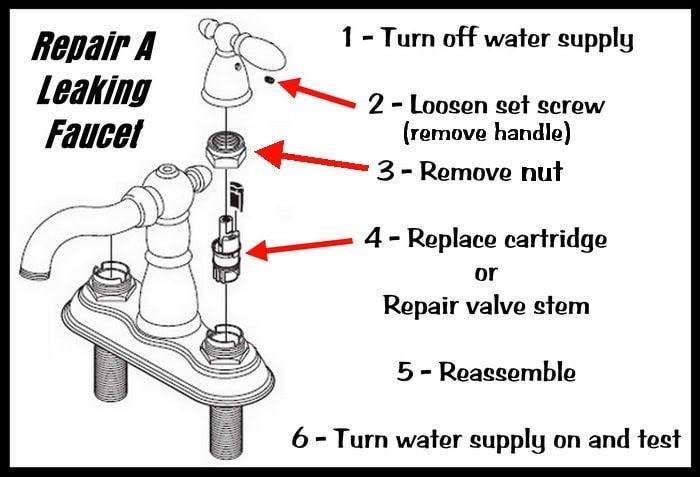 After that, everything is assembled in the reverse order and installed in place.
After that, everything is assembled in the reverse order and installed in place.
If water is still not drawn in, most likely the valve itself is faulty and will have to be replaced with a new one.
Noisy filling is usually a problem with cisterns with side connection. Due to the design features, the valve is located on top and a jet of water, falling to the bottom of an empty tank, creates noise. To reduce it, special muffler tubes are installed at the valve outlet, reaching the bottom, along which the flow flows.
Often such tubes fall off, and sometimes they are completely absent. Therefore, as a solution, you need to return them to their place or select and install new ones of a suitable diameter on the valve outlet. The length of the hose should reach the very bottom or even lie on it.
If water is constantly flowing into the bowl in a thin stream, then the fill or drain valve is not working. If the first one breaks down after filling the tank, the water does not shut off, but if the second one is faulty, the collected water is not retained by the valve.
If the first one breaks down after filling the tank, the water does not shut off, but if the second one is faulty, the collected water is not retained by the valve.
To determine which valve is not working, you need to press the drain and watch:
In very rare cases, both mechanisms do not work at the same time. Also, overflow can occur due to improper setting of the filling valve - how to adjust it is described at the end of the article.
To eliminate the problem, you need to remove the reservoir cap and remove the filling mechanism. Next, you need to unscrew the valve nut and carefully remove the rubber membrane from it. From it, as well as from the valve seat, remove rust and scale deposits with a toothbrush, then rinse well with water. If the channel inside is clogged, clean it with a thin wire.
If the channel inside is clogged, clean it with a thin wire.
In older tanks, remove the cap from the valve, pull out the rocker shaft and remove the problematic part. With a thin knitting needle or wire, you need to clean the channel, and then rinse with water.
After cleaning and assembly, everything should work. If this does not happen, the diaphragm or the entire filling valve assembly will have to be replaced.
Gaskets for this mechanism are rarely sold separately. Therefore, just try to turn the old one upside down: it will still serve for some time. Alternatively, you can sand it with sandpaper, and then stick a circle of bicycle inner tube or other thin rubber on top.
First of all, you need to turn off the water, drain the liquid from the tank and, removing the residue with a sponge or rag, remove the drain valve. Next, you need to remove the gasket and clean it from rust deposits. If possible, it is better to replace the gasket with a new one.
If you can't find one, try flipping it upside down, or placing some kind of weight, like a large nut, on top of the valve to help the diaphragm press against the seat better. If all else fails, you will have to change the entire drain mechanism entirely.
Sometimes fillers with a float inside the cup get stuck due to rust due to rust. This leads to the fact that when filling the tank, water enters the glass from below, and not overflowing over its edge. As a result, the valve closes ahead of time and the tank is not filled to the desired level.
To solve the problem, turn off the water, flush out the residue and remove the filler mechanism. Next, remove the bracket and pull the plug valve out of the glass. Then it is necessary to clean the part and its seat from plaque, and also make sure that the plug fits well on the glass and moves freely.
Water leakage from the bottom of the cistern can occur if the cone gaskets of the mounting bolts or the large rubber ring between the toilet bowl and the cistern have failed.
In both cases, turn off the water and press the flush, and then remove the cover, remove the filling and drain fittings. After removing the remaining water, unscrew the mounting bolts and carefully inspect all seals for cracks.
It is advisable to replace the gaskets with new ones. If you can’t find the same ones, you can thoroughly clean them, dry them and install them in place, having previously lubricated all joints with silicone sealant.
A problem with the flush button is usually caused by the fact that when fully pressed, the stem catches on the valve mechanism and jams. In this case, often replacing the button itself does not give anything. There are several solutions.
The simplest thing is to unscrew the button, press it a little, sinking a couple of millimeters, and then put it back in place, holding it in this slightly pressed position. So the part looks a little recessed, but due to the reduced stroke it will not jam at the extreme point.
So the part looks a little recessed, but due to the reduced stroke it will not jam at the extreme point.
For the same purpose, you can cut a ring 2–3 mm high from a plastic bottle cap and place it under the button. To do this, use a screwdriver to press the latches on the sides of the mechanism and pull the button out of the case.
The rubber cuff that connects the cistern pipe to the toilet outlet dries out over time, loses its elasticity and starts to leak. Toilet repair in this case consists in replacing the problematic part. First you need to turn off the water and rinse.
If a new part cannot be found, a 50/40 mm rubber reduction can be installed instead. Unlike the cuff, it is inserted inside the toilet bowl, and is not put on top of it. Otherwise, there is no difference, and this will not affect the operation of the mechanism in any way.
As a temporary solution, you can carefully remove the old cuff, clean and dry it, and then install it, treating the joints with silicone sealant.
Water is leaking from the drain pipe nut due to a gasket installed inside the tank. Often it is cut by burrs from casting defects on the nozzle or shifted to the side when twisting. Also, the membrane itself may be of poor quality.
To eliminate the defect, turn off the tap at the inlet to the tank, rinse off the water and remove the drain valve, first unscrewing the decorative nut on the socket, and then the clamping nut. Next, you need to clean the burrs with a sharp knife along the entire plane of the gasket and assemble everything in the reverse order, securely holding the pipe with your hand when tightening the nut.
If this does not help, the gasket itself is most likely of poor quality. In this case, you need to cut a new one from a suitable piece of rubber 2–2.5 mm thick, using the old part as a template or tracing the nozzle with a pencil.
Water leakage at the junction of the nozzle and drain occurs due to poor fit or deformation of the cone gasket. And it needs to be replaced with a new one. If such a gasket is not at hand, you can temporarily seal the joint with FUM tape.
And it needs to be replaced with a new one. If such a gasket is not at hand, you can temporarily seal the joint with FUM tape.
To do this, turn off the water supply to the tank and empty it. Next, unscrew the decorative nut, slide the cone gasket down a little and wind three or four turns of the FUM tape into the resulting gap. Then the gasket must be lifted up, tighten the wound tape, and then tighten the decorative nut, holding the pipe with your hand so that it does not turn.
The flush and fill valves must be properly adjusted for the toilet to work properly. Otherwise, flushing will be poor, due to the fact that the tank is not filled enough or the water does not drain properly.
In valves with a float inside the cup, it is necessary to remove the lid of the tank, shut off and drain the water. After pressing the glass latch, you should set it at such a height that the upper edge of the part corresponds to the mark on the overflow pipe (usually about 2 centimeters from its top). Then snap off the adjusting rod, lower the float to the bottom of the cup, make sure the bracket rests on the bottom, and then click the rod to fix the position of the float.
Then snap off the adjusting rod, lower the float to the bottom of the cup, make sure the bracket rests on the bottom, and then click the rod to fix the position of the float.
In mechanisms without a glass, everything is much simpler. The height of the float and, accordingly, the amount of water in the tank is adjusted by twisting and unscrewing a long threaded pin. The higher the float, the more water is collected, the lower - the less.
To adjust, unscrew the button, remove the cover and remove the drain fitting, having previously flushed the water and turned off the tap at the inlet. Next, you need to return the lid to its place and measure the distance from its top to the bottom of the tank with a tape measure.
Remove the cap again and replace the drain valve. Then tighten the button, release the rod lock and adjust the height of the mechanism so that the distance to the bottom of the button corresponds to the previously measured one. The missing millimeters are easy to catch due to the thread of the button, without wrapping it all the way.
The missing millimeters are easy to catch due to the thread of the button, without wrapping it all the way.
The next step is to set the frame of the mechanism at an angle downwards and fix it in this position with the rod lock. At the same time, the button moves freely in the guides, and the pusher does not raise the frame so that the valve does not open slightly.
In the neutral position, the drain valve is closed and should fully rise when the button is pressed. If the adjusting rod rests against the bottom of the tank, it should be cut off.
Finally, it is important to make sure that the frame of the mechanism does not hit the overflow tube when the button is pressed. If this happens, you need to remove the mechanism and lower the frame below. To do this, unscrew the nut, carefully slide the ring gasket and, sinking the tube a few millimeters, tighten the nut.
In older toilets with a plastic tank, the water level can be easily adjusted.